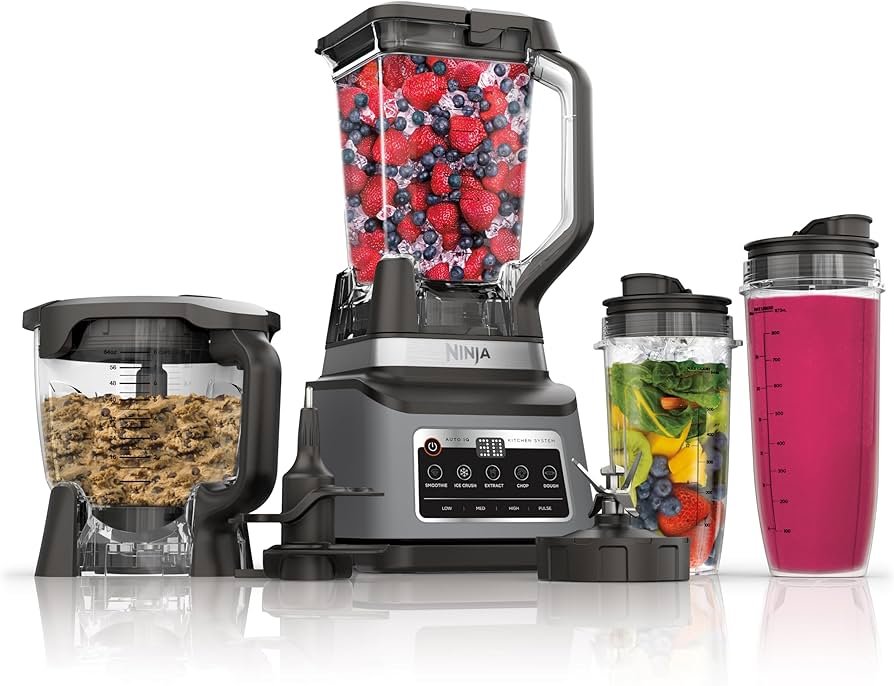Blenders and food processors are both powerhouses in the kitchen, each with their own set of tasks they excel at. While blenders are typically used for liquids and smoothies, food processors are the go-to appliance for more solid foods and intricate tasks like chopping, slicing, and dough-making. But what if you have a versatile blender like a Ninja and want to use it as a food processor? You’re in luck because we at TheKitchenApplianceDad.com are here to guide you on how to do just that!
Ninja blenders are known for their power and versatility. Many models come with various attachments and features that allow them to function similarly to food processors. Before attempting to use your Ninja as a food processor, it’s important to familiarize yourself with its capabilities and safety features.
Check the Model Specifications:
Not all Ninja blenders are designed to perform food processor tasks, so it’s crucial to refer to the user manual or product specifications to see what your particular model can handle.
Blade Types and Attachments:
Some Ninja blenders come with specific blades and attachments that mimic food processor blades, such as dough blades or chopping blades. These are designed to handle tasks that go beyond blending.

Once you’ve determined that your Ninja blender is capable of handling food processor tasks, follow these steps to convert it into a food processor:
Step 1: Swap Out the Blades
If your Ninja came with a set of different blades, select the one that best suits the food processing task you want to accomplish. For chopping and slicing, use a chopping blade; for dough, use a dough blade.
Step 2: Use the Pulse Function
The pulse function on your Ninja blender will be your best friend for food processing tasks. It allows you to control the texture of the food you’re processing, ensuring that you don’t over-process and end up with mush.
Step 3: Work in Batches
If you have a large amount of food to process, it’s best to work in batches to ensure an even result. Overfilling the blender can lead to inconsistent textures, with some parts being over-processed and others remaining too large.
Let’s delve into specific tasks that your Ninja blender can handle and how to execute them like a pro.
Chopping Vegetables:
For chopping vegetables, use the chopping blade if available and the pulse function to reach the desired size. Be cautious not to overdo it, as you can quickly turn your veggies into a puree.
Making Dough:
If your Ninja blender came with a dough blade, you can use it to mix and knead dough. Add your ingredients and use the ‘dough’ setting if your model has one, or pulse to mix until the dough forms a ball.
Grinding Nuts and Seeds:
The regular blending blade can usually handle grinding tasks. Use the pulse function to grind nuts and seeds to your preferred consistency.
Making Purees and Dips:
Use your Ninja blender to make hummus, salsa, or other dips and purees. The pulse function allows you to control the texture, ensuring you get the perfect consistency every time.
To ensure the best results when using your Ninja blender as a food processor, keep these tips in mind:
Your Ninja blender is more than just a smoothie maker; with the right techniques and attachments, it can take on many of the tasks of a food processor. This versatility can save you time, space, and money, making it a valuable multitasker in your kitchen arsenal.
At TheKitchenApplianceDad.com, we’re all about making your time in the kitchen as efficient and enjoyable as possible. We hope this guide empowers you to explore the full potential of your Ninja blender and inspires you to create a wide array of dishes with just one appliance.
Remember, the key to successful kitchen adventures is to have fun and learn as you go. Your Ninja blender is a versatile tool, and now you’re well-equipped to use it to its full potential. Happy blending (and processing)!

